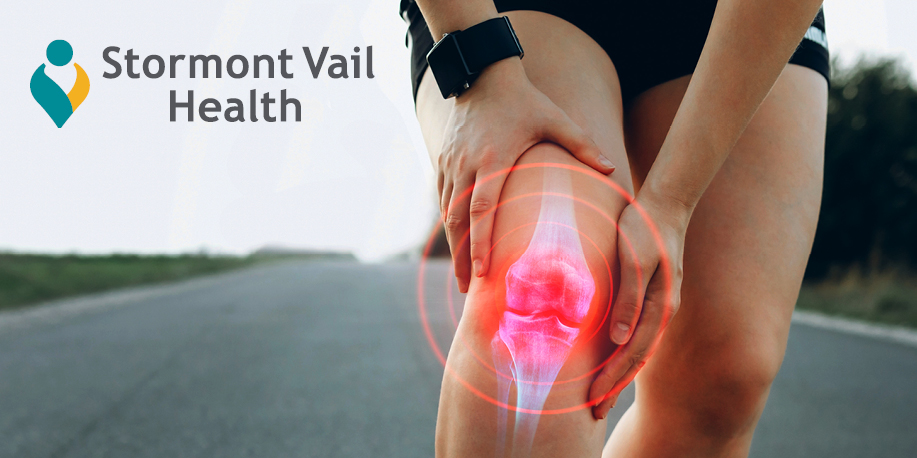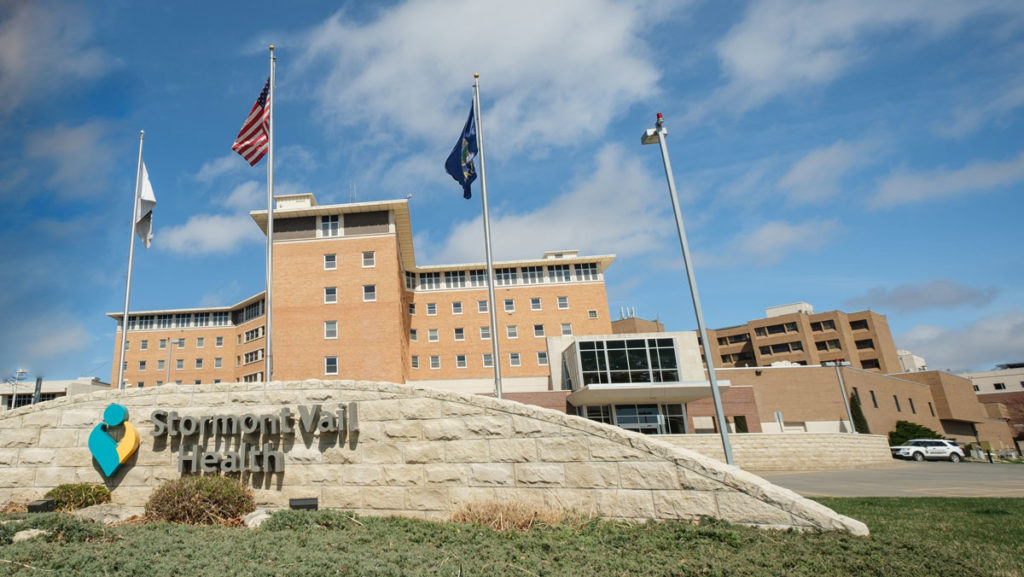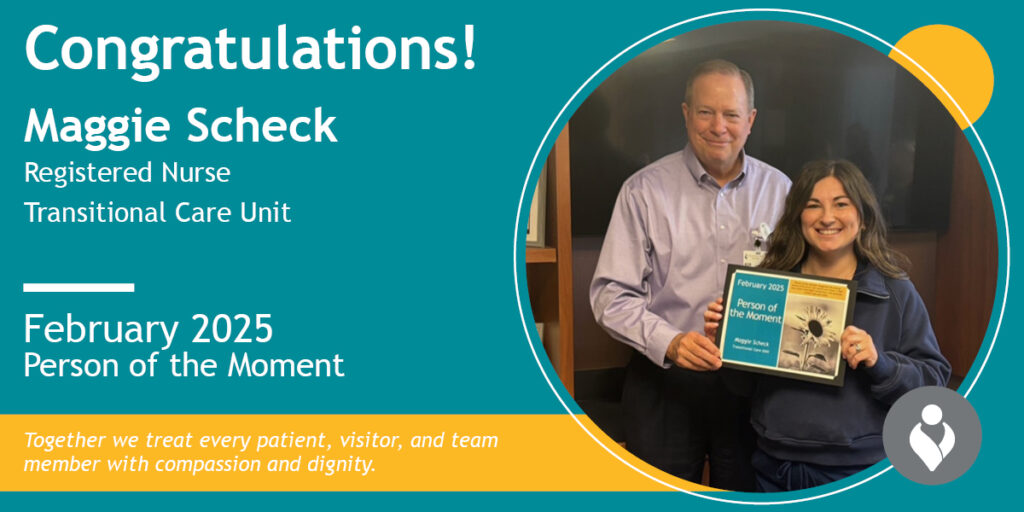Newsworthy
Treating Common High School Sports Injuries

Where there are sports, there are bound to be sports injuries. Nowhere is this more evident than in high school sports. And if those injuries don’t receive the right treatment, teens risk reinjury and more time out of the game. Keep reading to learn more.
Common High School Sports Injuries
Leg Muscle Strains
Brad Parry supervises the certified athletic trainers (ATCs) with Stormont Vail Health’s Orthopedic and Sports Medicine team and is also an ATC with Washburn Rural High School. After 40 years, he’s seen his fair share of sports injuries.
“The most common strains we see are to the quadricep (muscle group on the front of the thigh), hamstring (muscle group on the back of the thigh), hip flexors (muscles on the front of the hip), and the calf muscles of the lower leg,” Brad said. “Depending on the severity of these injuries, they can sideline an athlete for a significant amount of time.”
When patients see Brad or any of our Orthopedics and Sports Medicine experts, initial treatment goals focus on reducing swelling and muscle spasms, starting with ice packs multiple times daily and some light stretching.
“Once the initial swelling is under control, we’ll start incorporating heat treatments,” Brad said. “You can use heating pads or sit in a warm bath before exercise and use ice afterward.”
When flexibility and strength normalize, the athletic trainer helps the athlete gradually work back into running, first with jogging and then through half-speed sprints, ¾-speed sprints, and then full-speed sprints. After completing the running program, the athlete slowly works back into practice with the team.
“What can be frustrating to athletes, parents, and coaches with this injury is the reinjury rate,” Brad said. An athlete may strain a muscle in the leg and back off for a few days to a week. The injury will feel better, so the athlete will jump into practice before fully recovering, triggering reinjury and restarting the treatment cycle.
Concussions
According to the Centers for Disease Control and Prevention, concussion is a type of traumatic brain injury (TBI) caused by a bump, blow, or jolt to the head or by a hit to the body that causes the head and brain to move rapidly back and forth.
This sudden movement can cause the brain to bounce around or twist in the skull, stretching and damaging the brain cells and creating chemical changes in the brain. Medical providers may describe a concussion as a “mild” brain injury as they aren’t typically life-threatening. Even so, the effects of a concussion can be severe.
Common Myths About Concussions
Mike Flynn, an athletic trainer at Hayden High School with 35 years of experience, debunked some commonly held beliefs about concussions.
Myth #1
Injured athletes don’t have a concussion if their CT or MRI results are normal.
Truth
These scans can identify skull fractures and bleeding but not concussions, which require a clinical diagnosis.
Myth #2
Concussed athletes should be woken up frequently at night.
Truth
Health providers no longer recommend this practice. Rest is more beneficial.
Myth #3
You can only get a concussion if you’re knocked unconscious.
Truth
90% of those injured do not lose consciousness.
Treating Concussions
In July 2011, the Kansas Legislature enacted the School Sports Head Injury Prevention Act, which states that “any athlete who exhibits signs, symptoms, or behaviors consistent with a concussion shall be immediately removed from the contest or practice and shall not return to play until cleared by an appropriate healthcare professional.”
The School Sports Head Injury Prevention Act defines a healthcare provider as “licensed by the state board of healing arts to practice medicine and surgery.” The KSHSAA understands this means a Medical Doctor (M.D.) or a Doctor of Osteopathic Medicine (D.O.).
According to the Kansas State High School Activities Association, cognitive rest is the first step toward recovering from a concussion. Educators should take steps to accommodate injured student-athletes, as they may struggle with concentration, memory, and organization. For example, they may modify the student’s academic workload or remove them from the classroom altogether.
Students should also avoid loud noises and screen time, including their phones, computers, tablets, and other devices, as these can also impair the brain’s recovery process.
The National Federation of State High School Associations and the KSHSAA recommend that students removed from a practice or competition due to a concussion or head injury complete a graduated return to play protocol after receiving medical clearance before returning to unrestricted athletics.
The National Federation’s Suggested Guidelines for Management of Concussion in Sports outlines when student-athletes who receive medical clearance should return to normal activities. Our ATCs also recommend following this treatment plan for concussion recovery.
These steps are a suggested protocol and may differ from recommendations by the student’s healthcare provider.
Step 1
Light Aerobic Exercise
Five to ten minutes on an exercise bike or light jog; no weight lifting, resistance training, or other exercises.
Step 2
Moderate Aerobic Exercise
15 to 20 minutes of running at moderate intensity in the gym or on the field without a helmet or other equipment.
Step 3
Non-Contact Training Drills in Full Uniform
Students may begin weight lifting, resistance training, and other exercises.
Step 4
Full-Contact Practice or Training
Step 5
Full Gameplay
Ankle Sprains
Austin Dodds, ATC at Silver Lake High School, quoted the National Athletic Trainers’ Association, saying an estimated 28,000 ankle injuries occur in the United States daily. Ankle injuries are the most common, with some estimates attributing upward of 45% of all athletic injuries to ankle sprains.”
Common Myths about Ankle Braces
Austin also debunked some myths about using ankle braces to treat ankle sprains and injuries.
Myth #1
Ankle braces make your ankles weaker.
Truth:
The brace is an external factor that aims to provide accessory support to the ankle; the body remains reliant on muscular control and dynamic stability provided by the foot/ankle/lower leg muscles. Often, muscular weakness is seen secondary to disuse or immobilization. Contrary to popular belief, the brace works to stabilize, not immobilize.
Myth #2
Ankle braces will eliminate ankle sprains.
Truth
Ankle braces are not the cure-all, nor are they foolproof. No prophylactic device can eliminate the inherent risk of injury. The use of braces can be seen mainly among those individuals who have sustained multiple sprains, although acutely, it yields excellent support and peace of mind for the user. Ultimately, viewing the brace as a seatbelt rather than a bomb shelter is more appropriate.
Myth #3
My ankle brace won’t fit into my shoes/cleats.
Truth
As with most things, many bracing options are available off the shelf. These, of course, range in size and comfort, as well as support provided. Although most shoes/cleats nowadays are minimalistic, chances are pretty good the most appropriate brace can be found even for the most stubborn situations. Talk to your athletic trainer about finding the right one for you.
Don’t Let Sports-Related Injuries Stop Your Game
The injuries may differ, but the focus on treatment remains the same: Taking the appropriate care and following the proper steps to ensure a high school athlete gets back in the game fully recovered and ready to play!
Thanks to Brad Parry, Mike Flynn, Austin Dodds, and Mike Ramirez, System Director of Rehabilitation Services, for their assistance.
References
- Adams J, Barton E, Collings J, DeBlieux P, Gisondi M, Nadel E. Emergency Medicine. Philadelphia, PA: Saunders, Elsevier, Inc; 2008:897-898.
- Fong DT, Hong Y, Chan LK, Yung PS, Chan KM. A systematic review on ankle injury and ankle sprain in sports. Sports Med. 2007;37(1):73-94.
- Ferran NA, Maffulli N. Epidemiology of sprains of the lateral ankle ligament complex. Foot Ankle Clin. 2006;11(3):659-662.



